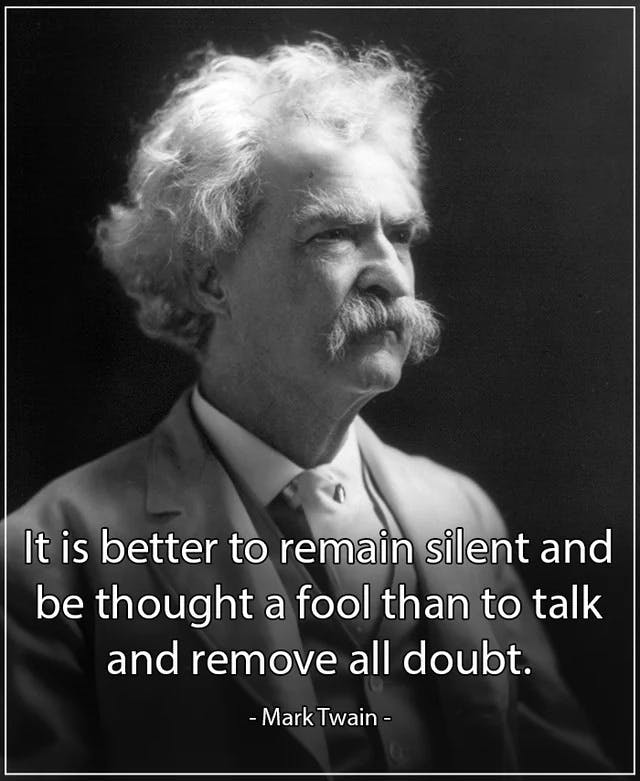Written by Sai Gattupalli
In recent years, the phrase "computational thinking" (CT) has become widely used in the fields of education and computer science [1]. It is a term that describes the capacity to resolve real-world issues utilizing the concepts, ideas and strategies core to computer science. As my research is directly related to CT, it occurred to me that I haven’t written about it yet. And so, as a part of my daily Feynman's, I present briefly about CT throughout history and how it came to be a fundamental idea in modern education.
We travel back in time to the 1980s, when the first generation of computers were making headlines all over [2]. This is the time when “computational thinking” first emerged [3]. At the time, computing was primarily used in military encryption, in scientific and other engineering calculations. Also the equipment and machines were large, expensive, and challenging to operate. But as technology advanced, computer chips shrank from a room-size to microbe-level 5nm. And with it, machines became more accessible, and improved in usability. As a result, computing devices found many applications that grew beyond yesteryear’s technological limitations, taking us into the hidden realms of science and engineering.
In the field of educational technology, which started to develop in the 1980s, one of the main interests of the research community is to enhance learning by using computers in the classroom. This fruitful research created new paradigms in how we conduct education in the modern day - from learner-centered teaching approaches, game-based learning, personalized learning, intelligent tutors, and extended reality, to high-level national literacy interests [5][6]. The idea of computer literacy - which refers to the capacity to use computers for routine tasks like word processing, email, and web browsing - is one of the key concepts that came out of this research. During this process which connected computing devices to learning sciences, the proper definition of computer literacy started to shift toward CT.
The phrase "computational thinking" was first used by Jeannette Wing (and previously by Papert, but the concept rocketed after Wing's work) in her groundbreaking 2006 ACM communications letter, where she defined it as -
"the thought processes involved in formulating problems and their solutions so that the solutions are represented in a form that can be effectively carried out by an information-processing agent" [7].
In [7][8][9][10], Wing and other scientists emphasized the notion that CT is not just about programming or using computers, but also about the mental processes involved in problem-solving using the ideas and techniques of computer science. Since then, the concept had ignited a firestorm of innovation and progress in the world of computing education.

According to [11], CT has evolved into a crucial literacy practice in present-day education, especially in the fields of computer science and STEM (science, technology, engineering, and mathematics) education. There is an increasing need for teachers who are trained in CT as the subject curriculum has been incorporated into national curricula in many nations.
The understanding that CT is a crucial skill for the 21st Century is one of the factors contributing to the growing interest in this subject [7]. CT offers a way of thinking that can be used to solve a variety of problems, not just those relating to computing, in a world where reliance on technology is growing. So much has been written on this topic - that CT promotes creativity, critical thinking, and problem-solving abilities - all of which are necessary for success in the modern workforce.
As learning scientists, it is our duty to have a common understanding that equitable CT literacy practices can be tuned to assist in addressing issues related to inequality and lack of diversity in education - by making learning fun and active, and not scripted - which by the way, is another growing concern in the field. Federal science bodies such as NSF have developed purpose-built literacy programs such as NSF Broadening Participation in Computing (BPC) to address diversity concerns in national computing literacy indices [12]. Research labs where I work, the Advanced Learning Technologies Lab [13] and the Center for Knowledge Communication [14] - both support the broadening initiative. The Usable Math researchers that I work with, Dr. Maloy and Dr. Edwards also support the NSF’s goal to address the “digital divide” and open up opportunities for students from different backgrounds (especially low-income, underserved communities) by giving them the knowledge, and abilities to solve problems using computer science concepts and techniques [15].
By now, you must have a brief overview of the concept of CT in general. I did not cover many areas of the topic such as what CT is actually comprised of, what ways it is being taught in schools, and so on. The most important takeaway from this article should be that CT will continue to be a crucial skill as we move forward - crucial for success in a world that is changing rapidly. In case you are interested in knowing more about CT, I recommend the following readings -
[16][17][18]
Thanks for reading.
We will end with one of Mark Twain's quotes:

References
[1]S. Grover and R. Pea, “Computational thinking in K–12,” Educational Researcher, vol. 42, no. 1, pp. 38–43, Jan. 2013, doi: 10.3102/0013189x12463051.
[2]“1990,” Computer History Museum. https://www.computerhistory.org/timeline/1990/ (accessed Feb. 28, 2023).
[3]Contributors to Wikimedia projects, “Computational thinking,” Wikipedia, Feb. 18, 2023. https://en.wikipedia.org/wiki/Computational_thinking (accessed Feb. 28, 2023).
[4]J. Lockwood and A. Mooney, “Computational Thinking in Secondary Education: Where does it fit? A systematic literary review,” International Journal of Computer Science Education in Schools, vol. 2, no. 1, pp. 41–60, Feb. 2018, doi: 10.21585/ijcses.v2i1.26.
[5]“Computers & Education,” ScienceDirect.com by Elsevier. https://www.sciencedirect.com/journal/computers-and-education/vol/198/suppl/C (accessed Feb. 28, 2023).
[6]T. Mochizuki et al., “International Journal of Computer-Supported Collaborative Learning,” Springer US, Dec. 24, 2022. https://www.springer.com/journal/11412 (accessed Feb. 28, 2023).
[7]J. M. Wing, “Computational thinking,” Communications of the ACM, vol. 49, no. 3, pp. 33–35, Mar. 2006, doi: 10.1145/1118178.1118215.
[8]J. M. Wing, “Computational thinking and thinking about computing,” Philosophical Transactions of the Royal Society A: Mathematical, Physical and Engineering Sciences, vol. 366, no. 1881, pp. 3717–3725, Jul. 2008, doi: 10.1098/rsta.2008.0118.
[9]A. Soleimani, “Computational Design Thinking and Thinking Design Computing,” in Conference Proceedings. Accessed: Feb. 28, 2023. [Online]. Available: http://dx.doi.org/10.21428/f7d9ca02.b7daadcc
[10]A. Settle, D. S. Goldberg, and V. Barr, “Beyond computer science,” in Proceedings of the 18th ACM conference on Innovation and technology in computer science education, Jul. 2013. Accessed: Feb. 28, 2023. [Online]. Available: http://dx.doi.org/10.1145/2462476.2462511
[11]J. Lockwood and A. Mooney, “Computational Thinking in Secondary Education: Where does it fit? A systematic literary review,” International Journal of Computer Science Education in Schools, vol. 2, no. 1, pp. 41–60, Feb. 2018, doi: 10.21585/ijcses.v2i1.26.
[12]“CISE - Broadening Participation in Computing (BPC),” NSF - National Science Foundation. https://www.nsf.gov/cise/bpc/ (accessed Feb. 28, 2023).
[13]“Advanced Learning Technologies Lab,” Advanced Learning Technologies Lab | Ivon Arroyo. https://advancedlearningtech.com/
[14]“The Center for Knowledge Communication,” The Center for Knowledge Communication | Beverly Woolf | Ivon Arroyo | Danielle Allessio. https://centerforknowledgecommunication.org/ (accessed Feb. 28, 2023).
[15]J. Light, “Rethinking the Digital Divide,” Harvard Educational Review, vol. 71, no. 4, pp. 709–734, Dec. 2001, doi: 10.17763/haer.71.4.342x36742j2w4q82.
[16]“ISTE.” https://www.iste.org/professional-development/iste-u/computational-thinking (accessed Feb. 28, 2023).
[17]J. M. Wing, “Computational thinking and thinking about computing,” Philosophical Transactions of the Royal Society A: Mathematical, Physical and Engineering Sciences, Jul. 2008, doi: doi:10.1098/rsta.2008.0118.
[18]D. Díaz, “What is computational thinking?,” University of York, Sep. 01, 2022. https://online.york.ac.uk/what-is-computational-thinking/ (accessed Feb. 28, 2023).
